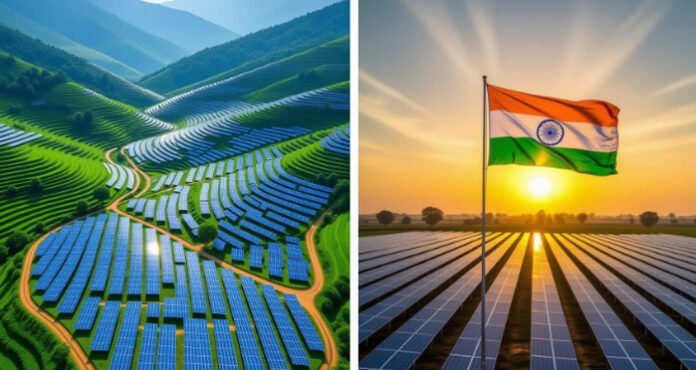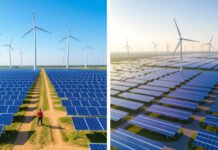New Delhi, India — October 10, 2025
India has officially reached 125 GW of installed solar power capacity, cementing its position as the world’s third-largest solar energy producer, trailing only China and the United States. Union Minister Pralhad Joshi hailed this achievement as a landmark in India’s green energy revolution, highlighting both economic and environmental gains.
The milestone reflects years of aggressive policy support, including:
PLI schemes incentivizing domestic solar manufacturing.
Rooftop solar subsidies boosting urban adoption.
Strategic deployment of large-scale solar farms in Rajasthan, Gujarat, and Tamil Nadu.
Economic and Climate Impact
India’s solar surge is not just about green energy—it reduces dependence on fossil fuel imports, strengthens energy security, and combats climate change. With millions employed in solar installation, manufacturing, and maintenance, the sector also contributes significantly to job creation and local economies.
Minister Joshi noted, “This achievement is a testament to India’s commitment to renewable energy and ‘Make in India’ initiatives. We are now firmly on the path toward 500 GW of renewable energy by 2030.”
Technological and Grid Innovations
Despite the impressive growth, challenges remain:
Grid integration of intermittent solar power.
Energy storage solutions to ensure 24/7 power supply.
R&D in advanced solar technologies, including floating and hybrid solar systems.
Emerging battery storage innovations and smart grid technologies promise to stabilize the grid and further accelerate adoption, making India a model for developing nations transitioning to clean energy.
Looking Ahead: Powering Net-Zero Dreams
The 125 GW milestone is more than a number—it’s a statement that India is serious about its net-zero ambitions. With continued policy support, domestic manufacturing, and technological innovation, India is poised to lead in sustainable energy, climate action, and economic resilience.
The question now is: Can India achieve its 500 GW target by 2030 and truly transform into a global renewable powerhouse?















